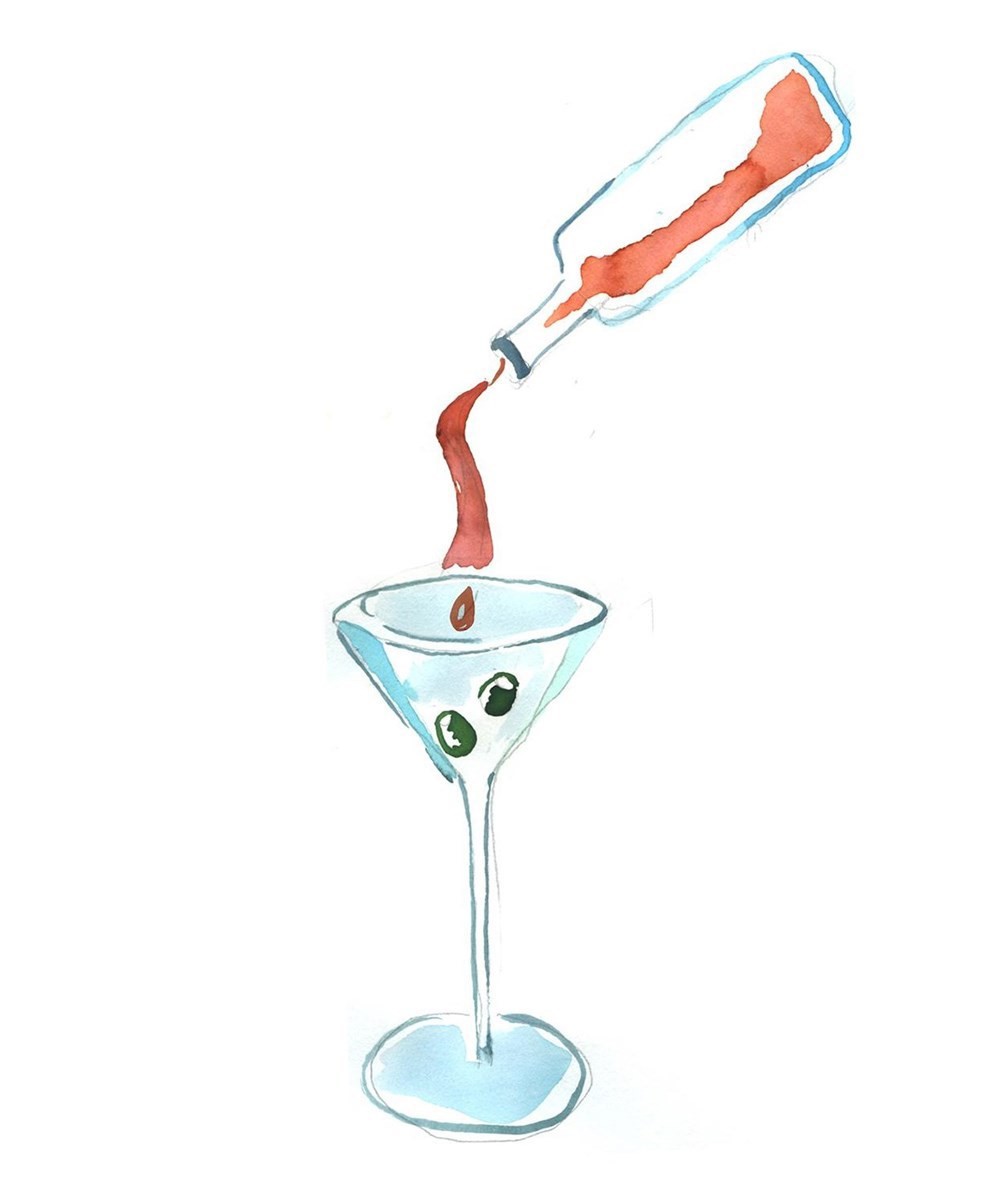The people of Spain approach daytime drinking with zeal and elegance. A way to enliven any afternoon, rather than the preserve of holidays alone. And in Catalonia these occasions tend to entail vermouth, or vermut in local parlance. As unlike most, who engage with it in cocktails alone, a negroni or gibson Martini, for example, they embrace its bittersweet charms frequently and on their own terms with just ice, seltzer and a slice or olive, for company. Then again, what they sip is not quite the unfairly maligned stuff of fading memory. For Catalonia hosts a swathe of artisanal and commercial producers of the aromatised and fortified wine – and Barcelona boasts hundreds of places in which to imbibe their wares, slowly, and with food.
The explosion in vermouth-plying spots is a relatively recent phenomenon attributed to multiple factors including its suitability to food pairing, low alcohol content, inexpensive pricing and Catalonian heritage. Their trend oft quoted during discussions of vermouth’s growing popularity on other shores. So, however long your stay in Barcelona, ensure to find a couple of hours, and fine company, with which to fer el vermut (“do the vermouth”). As Primavera Festival beckons, we review the Catalonian chapter in vermouth’s story and reveal the essential rules for its consumption in their capital.

The History
As with many alcohols now imbibed for pleasure alone, the origins of vermouth are distinctly medicinal. Its defining ingredient being wormwood, or artemisia absinthium, also the base of absinthe, which was added to wine from 1500 BC in India and administered by Hippocrates as a balm for jaundice among other ailments. Variations on wormwood wine proliferated throughout Europe, its bitter properties believed to aid digestion. Around the 16th century, vermouth gained its international name from the French pronunciation of the High German for wormwood, Wermud.
Already popular as a home-brew, it fell to Italian herbalist winemaker Antonio Benedetto Carpano to craft the initial commercial sweet vermouth based on muscatel wine in Turin in 1786. The beverage found royal favour, his rosso style decreed the official tipple. Not long after, Marseilles winemaker Joseph Noilly created a pale, dry vermouth upon a base of picpoul and clairette grapes. These two main classifications still hold sway over most vermouths made today. And the two regions’ proximity to vineyards and spice-trading routes guaranteed stable supply as the drink won over upper classes around the continent, prior to becoming an essential ingredient in the very first cocktails, such as martini precursor, the Martinez and the Manhattan.
Despite differentiations in colour, vermouth is almost always based on fortified white wine to which a secret blend of botanicals (roots, herbs, roots, spices, flowers and barks) is added by each maker, with artemisias still a mandatory inclusion in Europe. The darker, usually sweeter, versions are coloured by the addition of caramelised sugar, and it was this bittersweet rosso style that the artists and aristocrats of Barcelona went wild for in the late 19th century. It was also around this time that vermut casero, house vermouth, began to be produced in the surrounding countryside, mostly around Tarragona, which remains Spain’s vermouth-making centre to this day. Whether artisanal, and so undergoing a longer natural maceration, or commercial, Spanish vermouths tend to be made from slightly sweeter wines.
The tradition for vermut, along with a little snack, to be served after Sunday mass, whetting the appetite for the large family lunch, soon spread throughout the region. It was also taken as an aperitif in Barcelona where, in 1902, the city’s inaugural vermouth-specialising venue Café Torino opened. Sadly, despite being located inside a modernist structure by Josep Puig i Cadafalch, Pere Falqués and Antoni Gaudí, and attracting a thronging clientele of the chic and elite, it shut its doors again in 1911. Yet this didn’t dent local fervour for the libation. And with the deprivations of the Spanish Civil War, vermut casero, grew in popularity amongst the working classes. Its consumption was initially concentrated in the simple tavernas of the Barceloneta barrio, where vermut was served from casks and accompanied by fresh seafood in the afternoon hours.

The Rules
Vermut is still seen as an aperitif and taken from noon, although these days your fer el vermut date might stretch into a languid afternoon and beyond. Whenever you choose to sip, vermut casero (plump for negre) over ice with a spritz of seltzer from a siphon and a slice of orange or an olive as a garnish is the way to go. (Although if not to your taste, declining the spritz isn’t a travesty). If there isn’t a house vermouth on offer, select a locally produced vermut such as those by Casa Mariol, Yzaguirre or Perucchi. But whatever fills your glass, it must be accompanied by something to nibble on, which might mean: almonds, crisps, anchovies, sardines, olives, cured meats or tuna, local cheeses, seafood such as berberechos (cockles) or another specialty plied by your venue. Due to the long, late lunch this ritual is intended to arouse an appetite for, it doesn’t usually do to hit the tapas menu too, never mind the mains.

One Stop Shop
Due to its resurgent popularity, vermouth can now be enjoyed in hundreds of diverse spots all over the city, from traditional merchants to zhuzhy contemporary restaurants, on-trend dive bars to specialist vermuterías. You might like to begin with a heritage-steeped taverna, and so head to Bar Electricitat in Barceloneta and enjoy their famed vermut casero alongside a plate of beloved local meatballs, bombas. If you’d like to trial (and maybe purchase) a few varieties, make for Bodega Maestrazgo, a 60-year-old winery with a vermouth tasting room where the drink comes straight up alongside a serving of Cantabrian anchovies. Fancy a place with a significant hand in the city’s vermouth renaissance? Pop by one of its first designated vermuterías, Casa Mariol, whose artisanal vermut is served at acclaimed restaurants around the globe. Another venue with a strong gastronomic connection is famed chef Albert Adria’s purpose-built, vintage-inspired vermutería, Bodega 1900, where the booze comes poured from barrel, bottle or tap and accompanied by an array of delicious snacks. Or for an undeniably contemporary fer el vermut experience pitch up at Morro Fi (“fancy eaters”) in Eixample for brunch, Bormouth in El Born for an afternoon sojourn, or Carmelitas Vermuteria in the Raval at oh, well, just any time the sun shines.
